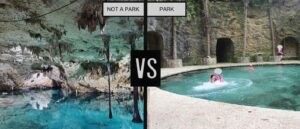Local Expert opinion
My blogs are different. They are not a copy-and-paste from other sites, and they are definitely not created by Artificial Intelligence. The information you’ll read here is authentic, genuine, sincere, and most importantly, well-founded. As a local expert and cenote guide, I want to share with you the differences between the different types of cenotes, and help you discover which one might be the best fit for you.
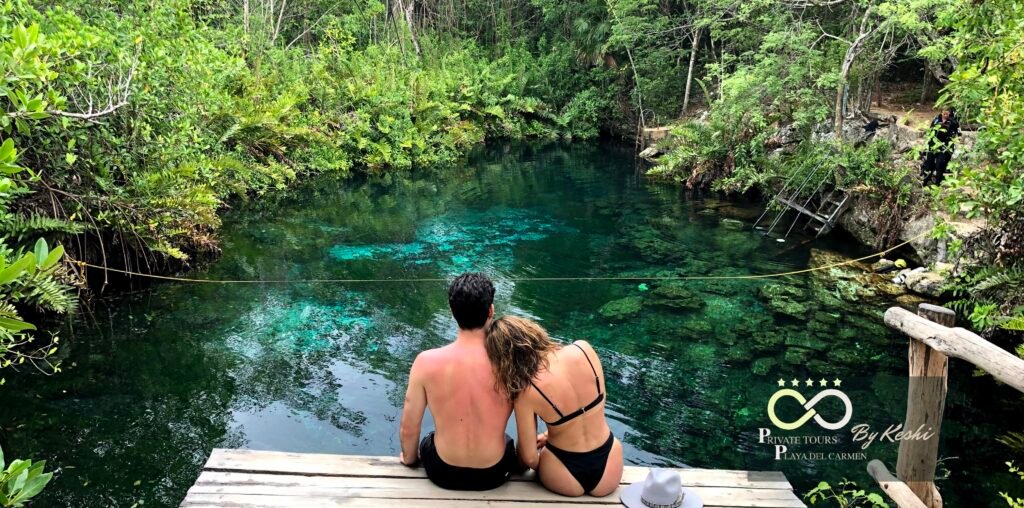
The Water Beneath the Yucatán Peninsula
The Yucatán Peninsula is a unique land. Beneath it lies a massive system of underground water. This is because the soil is karstic, formed about 64 million years ago when a meteorite struck this region. The surface is completely flat, and you could say that under our feet there’s one giant reservoir of water.
That’s why cenotes are everywhere. Some are very deep, others less accessible, but almost anywhere you dig, you’ll find water. These cenotes are connected by underground rivers that flow slowly toward the sea. Unlike mountain rivers that rush down quickly, here the water moves at a slower pace, though after rain it can flow more strongly.
Types of Cenotes
Over time, flowing water has carved out caves and tunnels underground. Depending on how erosion affects the ceiling of these caves, we get different kinds of cenotes:
- Closed cenote or cave cenote: when the underground river is still covered, and you can only access it underground.
- Open cenote: when the roof collapses and forms a natural pool right in the middle of the jungle.
- Semi-open cenote: when only part of the ceiling falls in, creating a hole that lets light and water in, forming a wide dome-like cavern.
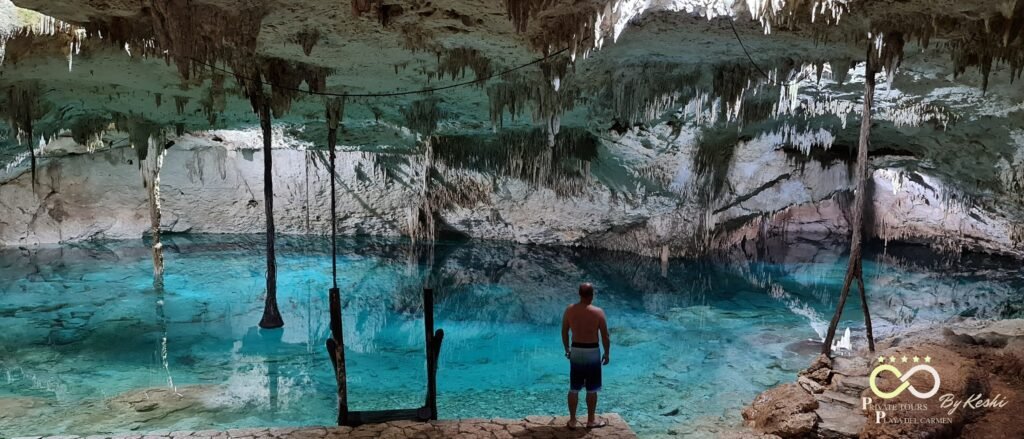
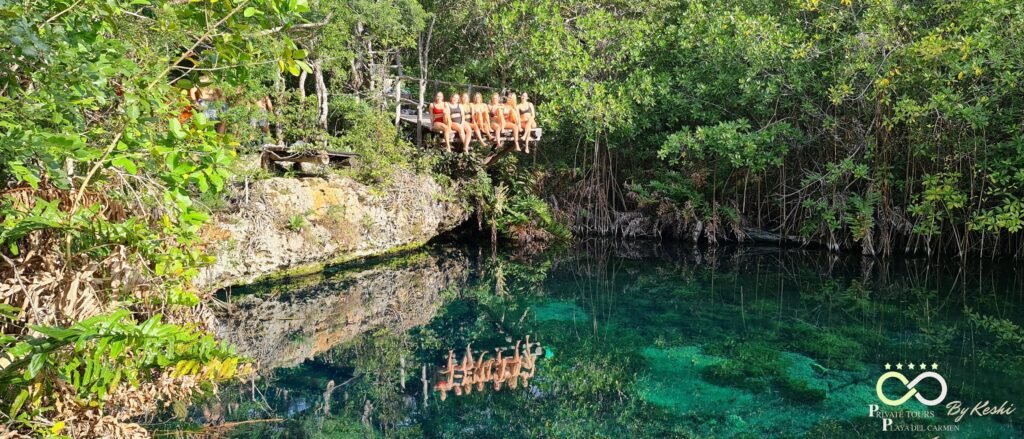
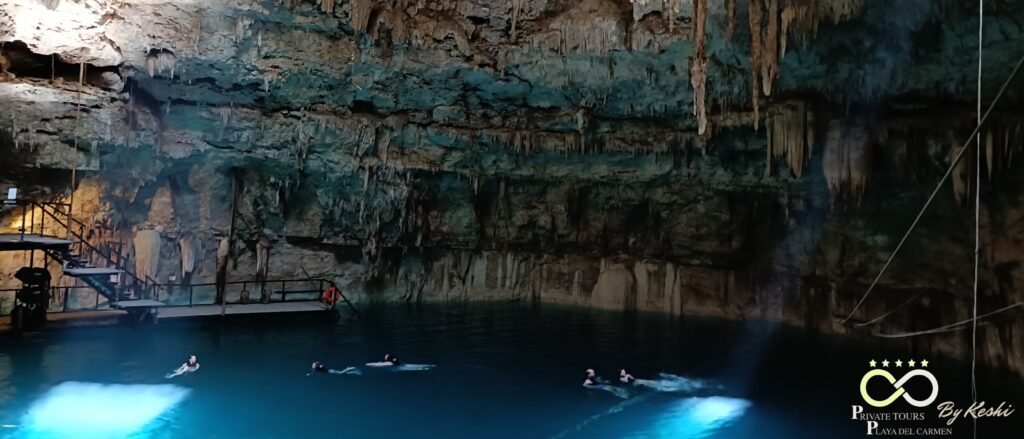
My Personal Categories of Underground Rivers
Now I’d like to share something very personal. As a guide and cenote lover, I’ve created my own way of classifying underground rivers into three categories. This is my personal Keshi classification:
- First category
Caves where there is no light and no oxygen. Everything is covered by water, you must carry lamps, a regulator, and an oxygen tank. This is extremely dangerous, only for highly experienced divers. - Second category
Here there is oxygen, and you can walk inside the cave. The water might be at your ankles, knees, waist, or even shoulders. But you’re almost always walking, with a space of about 2 to 5 meters of air between the water and the ceiling. - Third category (my favorite)
This one is a combination of the first two. You float most of the time, but occasionally your feet touch the ground. Above, there’s always oxygen, with 2 to 5 meters of open space between the water and the ceiling. Some of these rivers even have artificial lights installed so visitors can enjoy them. For me, this category is the perfect balance.
Honest Recommendations and Opinions
My blogs are honest, with no hidden agendas. You won’t find affiliate links or booking codes here. What I share is my sincere opinion.
- Well-known underground rivers:
- Xcaret and Xplor: in my opinion, these are not real underground rivers, so I don’t recommend them.
- Río Secreto: beautiful, I love it, but I find it expensive, and they don’t allow visitors to take photos.
- Alternative to Río Secreto: I recommend Mexxtremo (M-E-X-X-X-T-R-E-M-O). Their tour is more affordable and actually includes two experiences in one: ATV rides and an underground river.
- My personal favorites:
- From the third category, my top choice is Tak Bi Ha, the one I personally visit.
- For open cenotes, I recommend Jardín del Edén (go early, because it gets crowded in the afternoon) and Xunanhá (X-U-N-A-N-H-A).
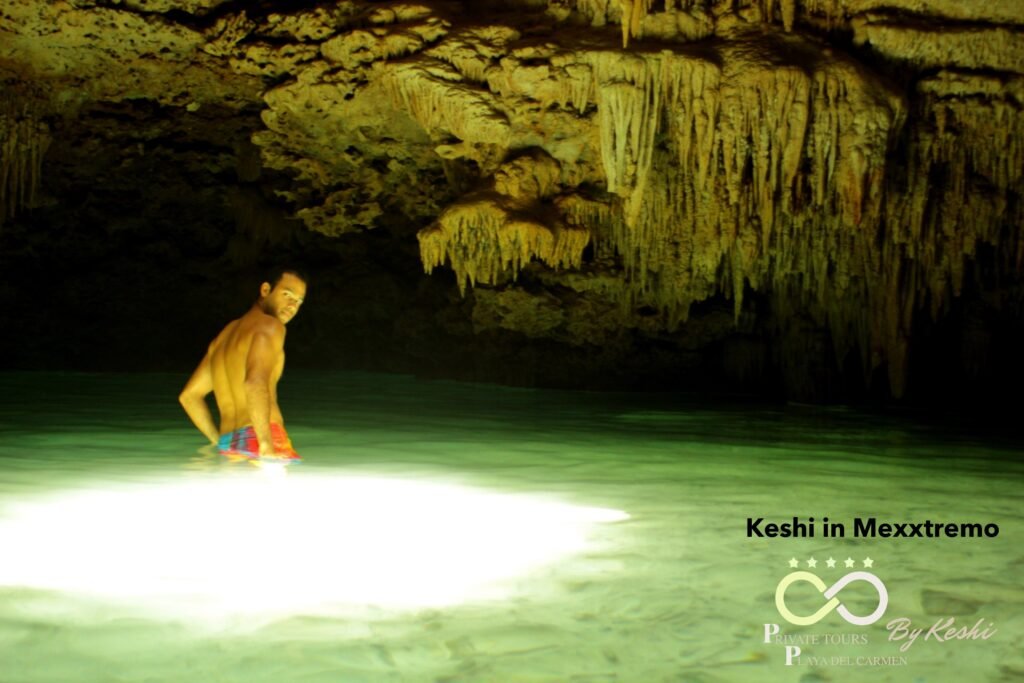
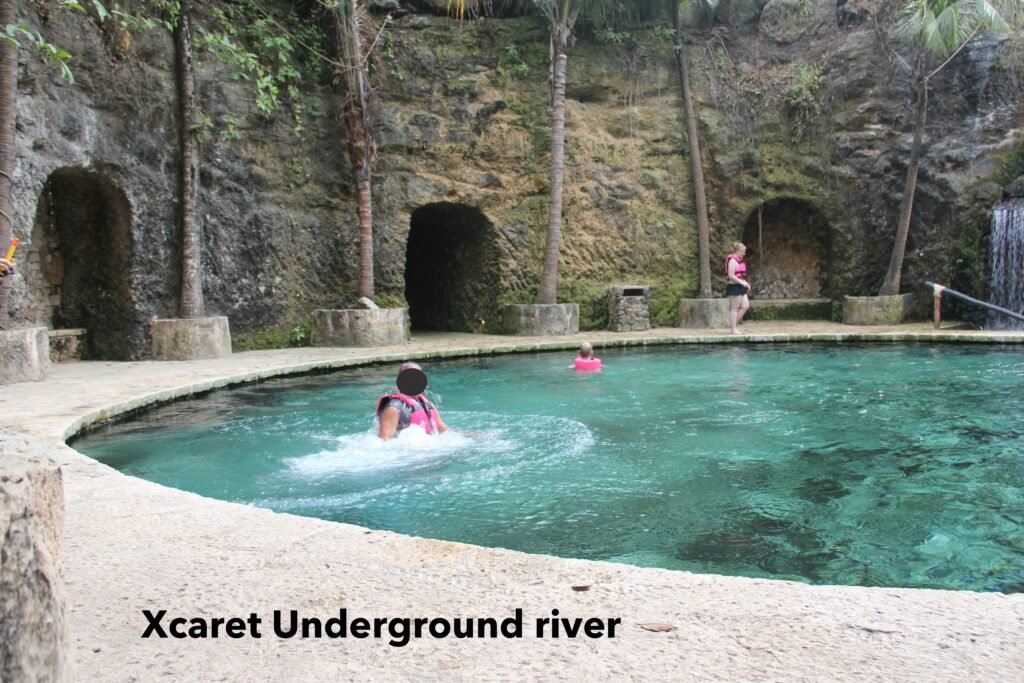
Conclusion
Cenotes and underground rivers are one of my greatest passions. This blog is just a summarized version, made short and easy to understand, but there’s so much more to share. Very soon, I’ll be writing more blogs with deeper insights into cenotes, caves, and how to choose the best experience for you.



